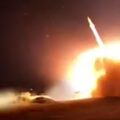 Iran’s Attack on Israel
Iran’s Attack on Israel
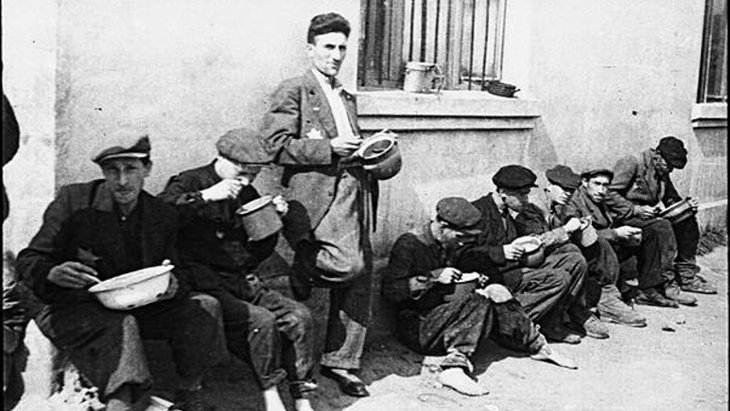

10 min read
Henryk Ross risked his life to document Nazi atrocities in the Lodz Ghetto.
“There was an order: ‘All the Jews to the ghetto’!”
The court listened, riveted, to the heart-rending testimony of a man seated in an Israeli courtroom, speaking in his native Polish, describing the death and destruction of millions of his fellow Jews just a few years earlier - and also describing his own heroic acts of resistance. For many people around the world, it was the only time they’d heard first-person accounts of what happened during the Holocaust.
The year was 1961, and the State of Israel was conducting the trial of Adolf Eichmann, one of the chief architects of the “Final Solution” that lead to the death of six million Jews as well as hundreds of thousands of other people. One 41-year-old Israeli, Henryk Ross, provided key testimony to Eichmann’s crimes. Thousands of pictures he secretly photographed during the Holocaust, at great risk to his own life, showed the world the depths of the depravity and brutality of the Nazi regime. Twenty years after he documented the cruelties of the Lodz Ghetto in Poland, Ross’s words and photos gave the world additional proof of the Nazis’ crimes.
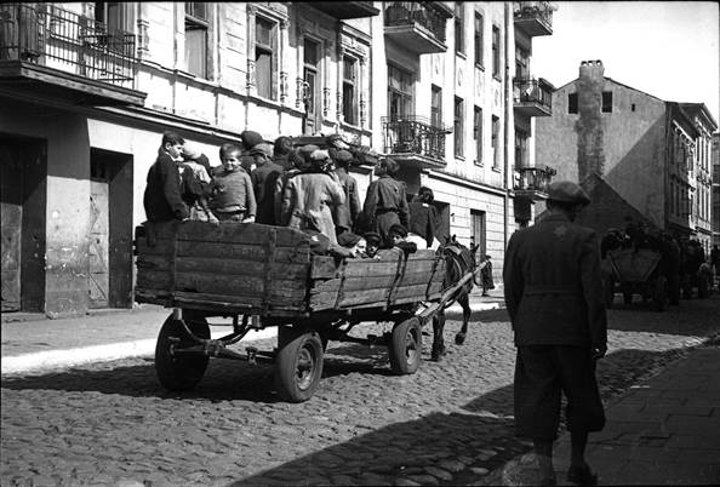
Lodz is a bustling city about 75 miles southwest of Warsaw. In 1940, Lodz had the second largest Jewish community in Poland, numbering about 160,000 people.
Germany occupied Lodz on September 8, 1939. Immediately, Jews were targeted for persecution: Jewish holidays were banned, property owned by Jews was taken, Jews were banned from doing business, and all Jews were forced to wear Jewish stars on their clothes. Many Jews were taken away to work in forced labor camps.
In early February 1940, the Nazis designated 4.13 square kilometers (that number was later reduced to an even smaller area) in the northeastern section of Lodz as a Jewish ghetto, and forced 160,000 Jews - a third of the city’s population - to live in the area’s cramped space. Walls and fences were erected and guards patrolled the perimeter making sure nobody escaped.
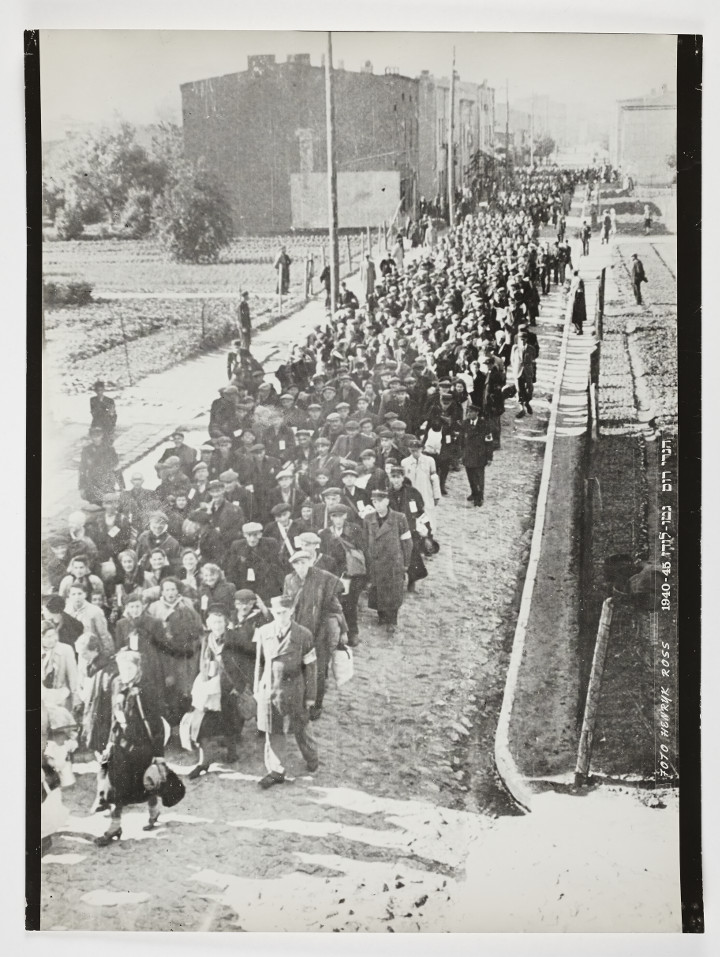
Henryk Ross, then a 21-year-old photographer working as a sports photographer for a Warsaw newspaper before the war, was one of the Jews forced into the ghetto. The Nazis took away his camera, but soon returned it, bestowing an official job: Henryk, along with two other Jews in the ghetto, was to be an official ghetto photographer, taking pictures of workers for their factory IDs as well as propaganda pictures for the Department of Statistics in the Lodz Ghetto, falsely showing that life was pleasant and tolerable inside the ghetto’s walls.
Henryk realized that his camera and photography development studio gave him a unique gift: while carrying out his official duties, he could also document the horrors and misery all around him. It was dangerous work; Henryk knew he would face certain death if his unauthorized photographs were ever discovered. Nonetheless he risked his life over and over again to take thousands and thousands of clandestine photos of life in the ghetto.
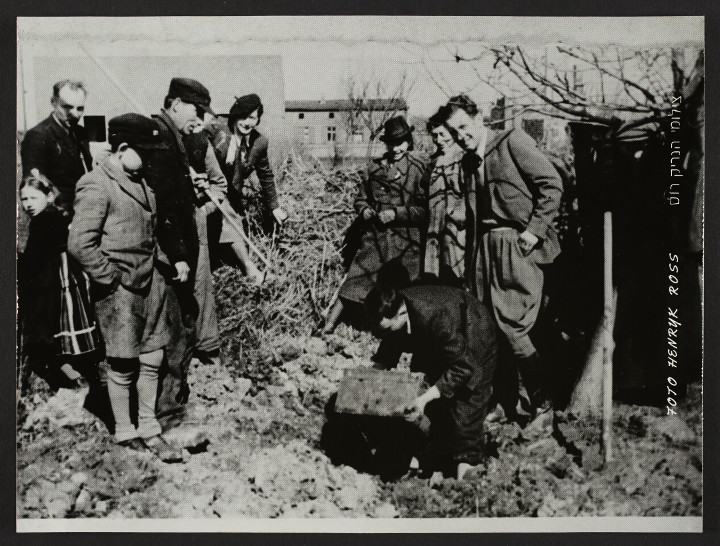
“I did it knowing that if I were caught my family would be tortured and killed,” Henryk wrote in 1987, but he knew he needed to leave behind proof of what was happening to the Jewish people. “Some record of our tragedy, namely the total elimination of the Jews from Lodz by the Nazi executioners. I was anticipating the total destruction of Polish Jewry,” Henryk recalled.
When taking pictures for work IDs, Henryk would group many workers into one shot, thus saving film for his secret photos. The rest of the time, he would hide his camera under his coat and roam the ghetto, taking photos of the Jews going about their daily lives. Henryk cut holes in his pockets so that he could manipulate his hidden camera more easily. He shot pictures of children playing and tender family scenes. He also documented the back-breaking labor of Jews toiling in impossible conditions: barefoot, emaciated, and exhausted from overwork.
Tens of thousands of Jews from across Europe were sent to live in Lodz, swelling the already overcrowded area still further. A neighboring area housed thousands of Roma prisoners transported to Poland from Austria. The Lodz Ghetto was the second largest ghetto in Nazi Europe after Warsaw.
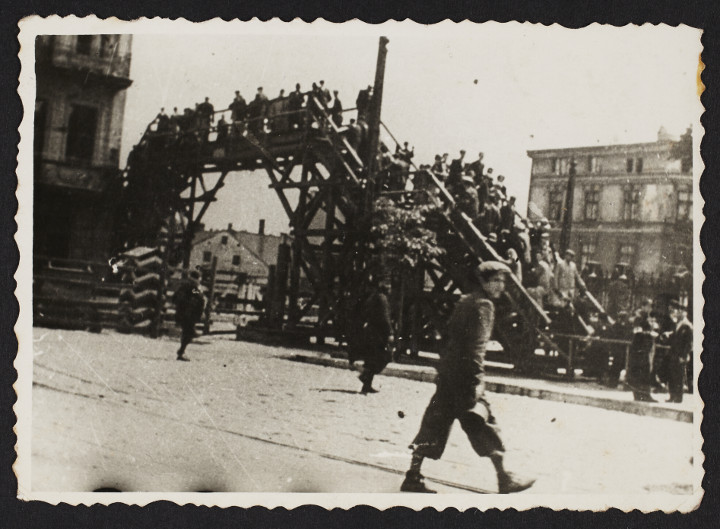
Lodz was meant to be a model ghetto, where Jews could escape death by proving their worth as workers. The ghetto housed shoe workshops, textiles factories, and centers where Jews were forced to make mattresses and German military uniforms. Tragically, some of the Jewish prisoners believed that working for the Nazis would keep them alive. The Chairman of the Jewish Council in the Lodz Ghetto, Mordechai Chaim Rumkowski, believed Nazi promises that being productive would save Jewish lives, and he helped run the ghetto in order to make it as productive as he could, hoping to appease his Nazi oppressors.
Jews in the ghetto performed backbreaking labor in harsh conditions, with very little food. Many had no running water nor access to toilets and sanitary conditions. Typhus ran rampant through the ghetto, and many died from malnutrition and overwork. About 20% of the Jews in the Lodz Ghetto perished from starvation, exhaustion and disease. “People either swelled up from hunger or became emaciated,” Henryk later testified. “There were cases of people collapsing in the street; there were cases where they collapsed at work and at home because of the difficult conditions. We were six to eight persons to one room, depending on the size of the room. People froze in the cold. There was no heating…I saw entire families, skeletons of people, who during the night were dying with their children.”
Those who didn’t die from neglect and overwork were sent away to be murdered, either in Auschwitz or in a nearby death factory built to kill the Jews of Lodz. In 1941, the Nazis built a killing facility at the town of Chelmno, about 30 miles northwest of Lodz. Starting in 1942, Jews and Roma were sent there to be murdered. Victims were sealed into airtight room in the back of trucks called “gas vans” and murdered as poisonous gas was pumped into the rooms. By September 1942, over 70,000 Jews and about 5,000 Roma had been murdered at Chelmno. Their bodies were buried or burned.
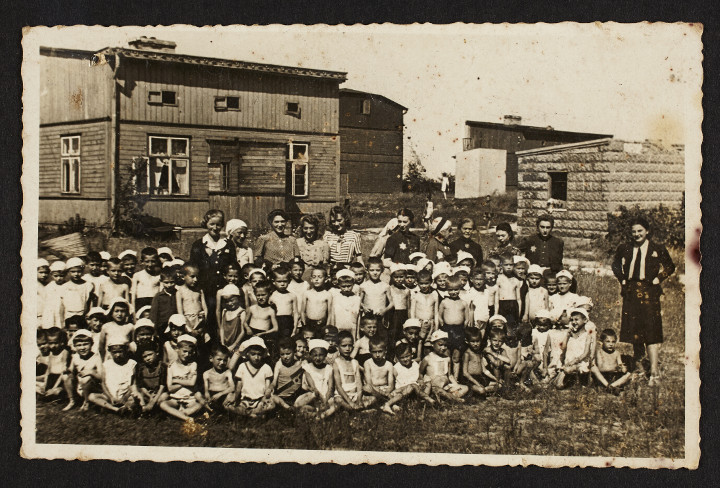
“In the year 1940, it was still not known” what fate awaited Jews, Henryk Ross explained later; “but by 1941, at the time of the further deportations, the Jews began to make inquiries and it became known to them that they were going into the ‘frying pan’...This was a routine expression of the people in the ghetto. They knew they were going to be burned…”
In September 1942, the Nazis issued a chilling order to the Jews of the Lodz Ghetto: almost all children under ten years old would be deported, sent to be murdered in Chelmno. Defying orders to stay indoors that cataclysmic day, Henryk went out to document this mass murder. His haunting photos of children waiting behind a chain-link fence to be deported gave the world the last glimpse of the lives of these beautiful young Jewish children.
Henryk also took the only photos of Jews being loaded onto railway cars at the Lodz railway station to be sent to their deaths at Auschwitz. These are important documents of the Nazi’s horrific crimes. At the Eichmann trial, Henryk recalled how he was able to document this scene:
“On one occasion, when people with whom I was acquainted worked at the railway station of Radegast (Lodz’s railway station), which was outside the ghetto but linked to it, and where trains destined for Auschwitz were standing - on one occasion I managed to get into the railway station in the guise of a cleaner. My friends shut me into a cement storeroom. I was there from six in the morning until seven in the evening, until the Germans went away and the transport departed. I watched as the transport left. I heard shouts. I saw the beatings. I saw how they were shooting at them, how they were murdering them, those who refused. Through a hole in a board of the wall of the storeroom I took several pictures.”
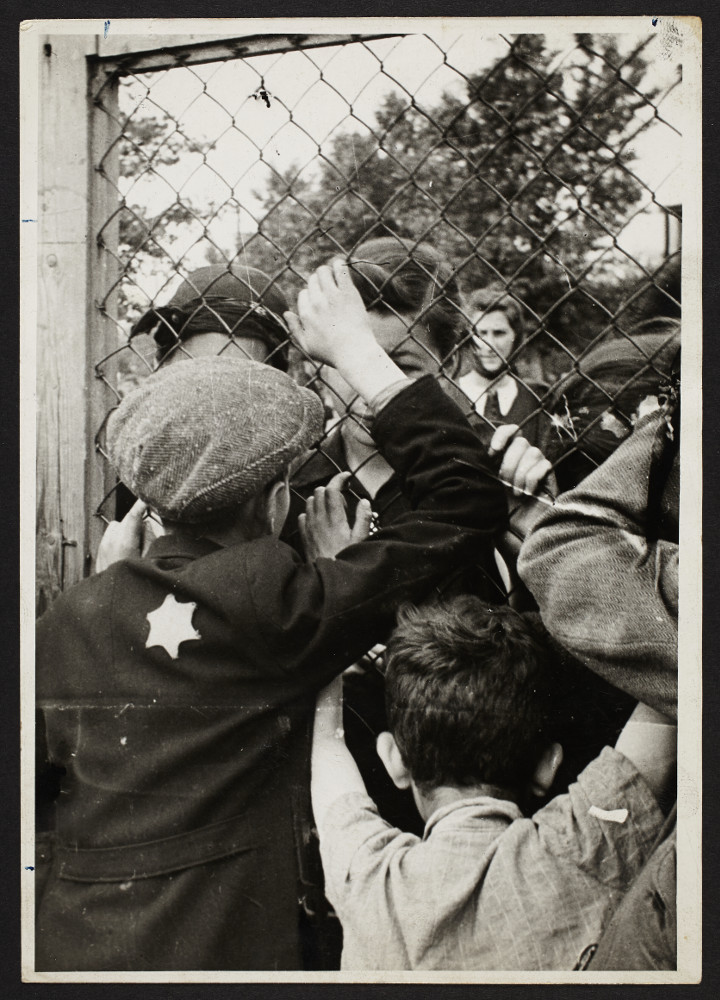
On another occasion, Henryk took photos of Germans seizing Jewish children from a hospital. “The Germans concluded that too few people were riding in the vehicles (taking Jews to be deported). They said they had to load more. The trucks came to the front of the hospital where the children were assembled. ...The children scratched the walls with their fingernails (as they were taken). The children did not cry any more, they knew what awaited them, they had heard about it. They could not cry. The Germans were running around in these rooms, they beat them and threw them from the windows and the balconies into these trucks. I was not there for a long time, for it was dangerous even for me to be there.”
Henryk didn’t take his photos alone. Soon after moving into the ghetto, he met Stefania Schoenberg; they married in the ghetto in 1941, and Stefania often worked as Henryk’s lookout, risking her life too so he could take his pictures.
On June 10, 1944, the order came: the Lodz Ghetto was to be liquidated and all remaining Jews sent to their deaths. At that point, the Jews of the Lodz Ghetto were the largest surviving Jewish community in Poland, but they soon would be reduced to ash like millions of other Jews. Between June 23 and July 17, 1944, over 7,000 Jews were sent from Lodz to Chelmo to be gassed. In August 1944 about 70,000 more Jews were sent to Auschwitz to be murdered.
By then, Henryk had amassed about 6,000 photographs. He buried them, assuming that he too would be killed. “I wanted to leave a historical record of our martyrdom,” he later explained.
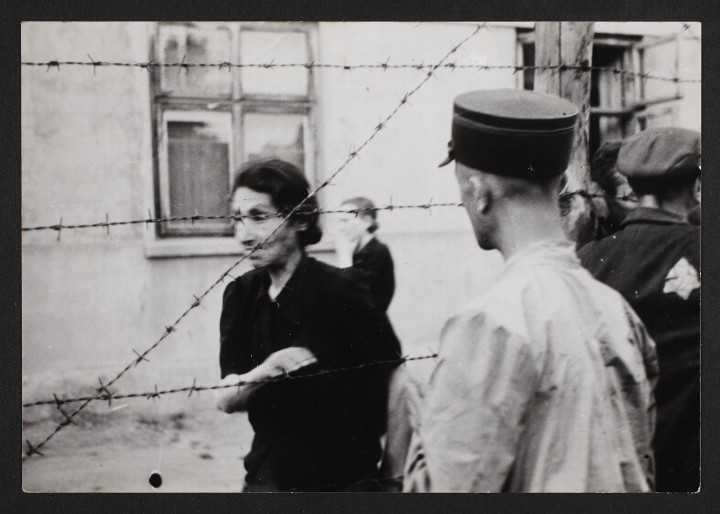
Instead of being deported, Henryk and Stefania were ordered to stay in the ghetto as part of the cleanup crew, erasing all traces of the Nazis’ crimes. They were scheduled to be murdered after they’d completed this gruesome work, but instead they and a handful of other Jews were liberated by the Soviets in January 1945. At the time, Henryk weighed just 85 pounds.
After the war, Henryk and Stefania dug up their precious photos and negatives. Water damage had destroyed about half of the negatives, but approximately 3,000 remained. The Ross's moved to Israel and began making prints. Their images provided crucial proof of many of the Nazis' horrific crimes and brutality at the Eichmann trial, showing the world for the first time what had gone on during the destruction of European Jewry.
Henryk Ross passed away in 1991. Before his death, he developed thousands of photographs from the Lodz Ghetto. Giving testimony at Eichmann’s trial, Henryk recalled, “I was shaking uncontrollably, everything came back to life.”
Thanks to Henryk’s and Stefania’s valiant work during their darkest years, the cruelty and crimes of the Nazi regime have come to life for all of us, allowing us a glimpse into both life and death in the Lodz Ghetto. The haunting images they produced of Lodz’s Jews are their enduring legacy.
